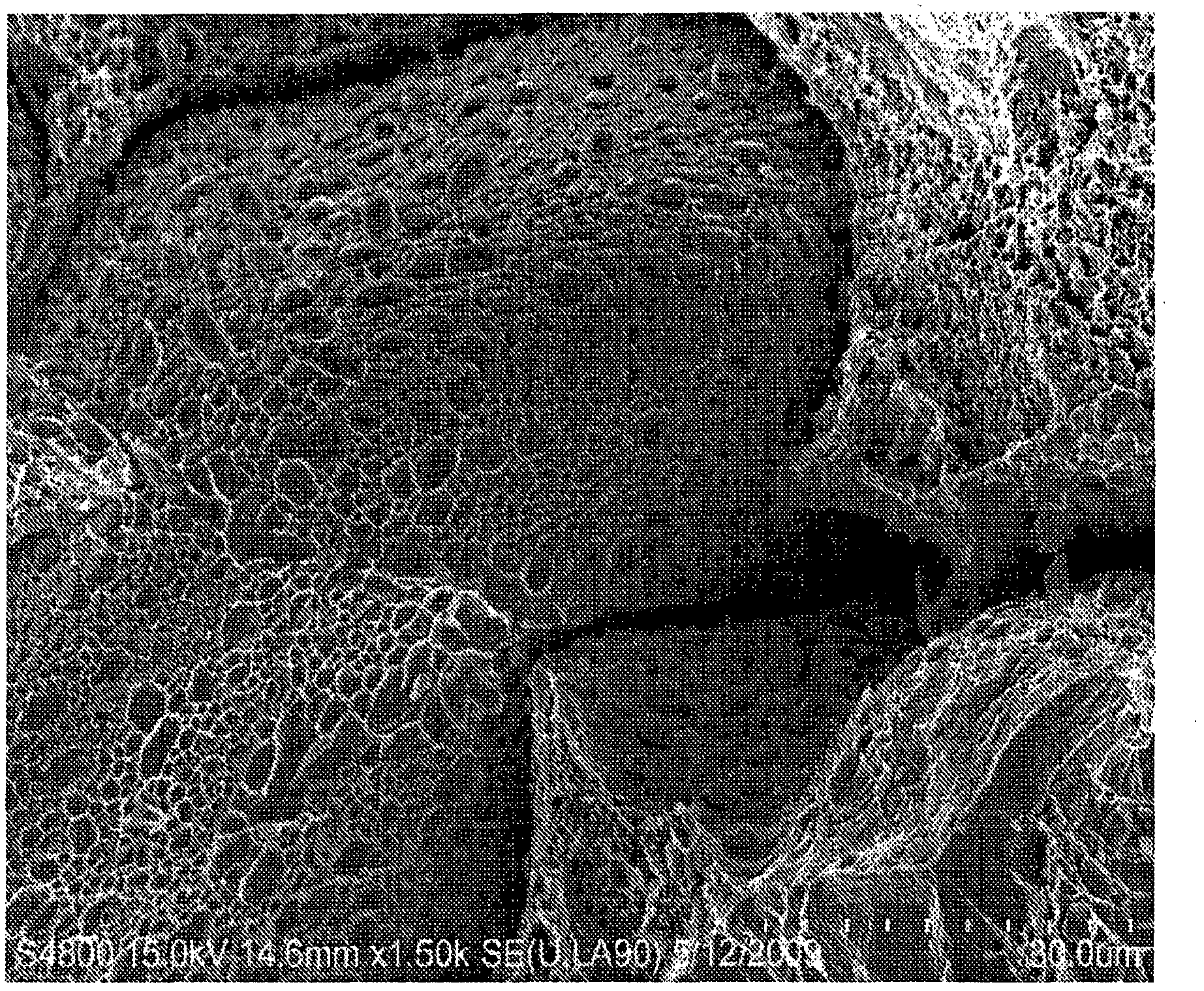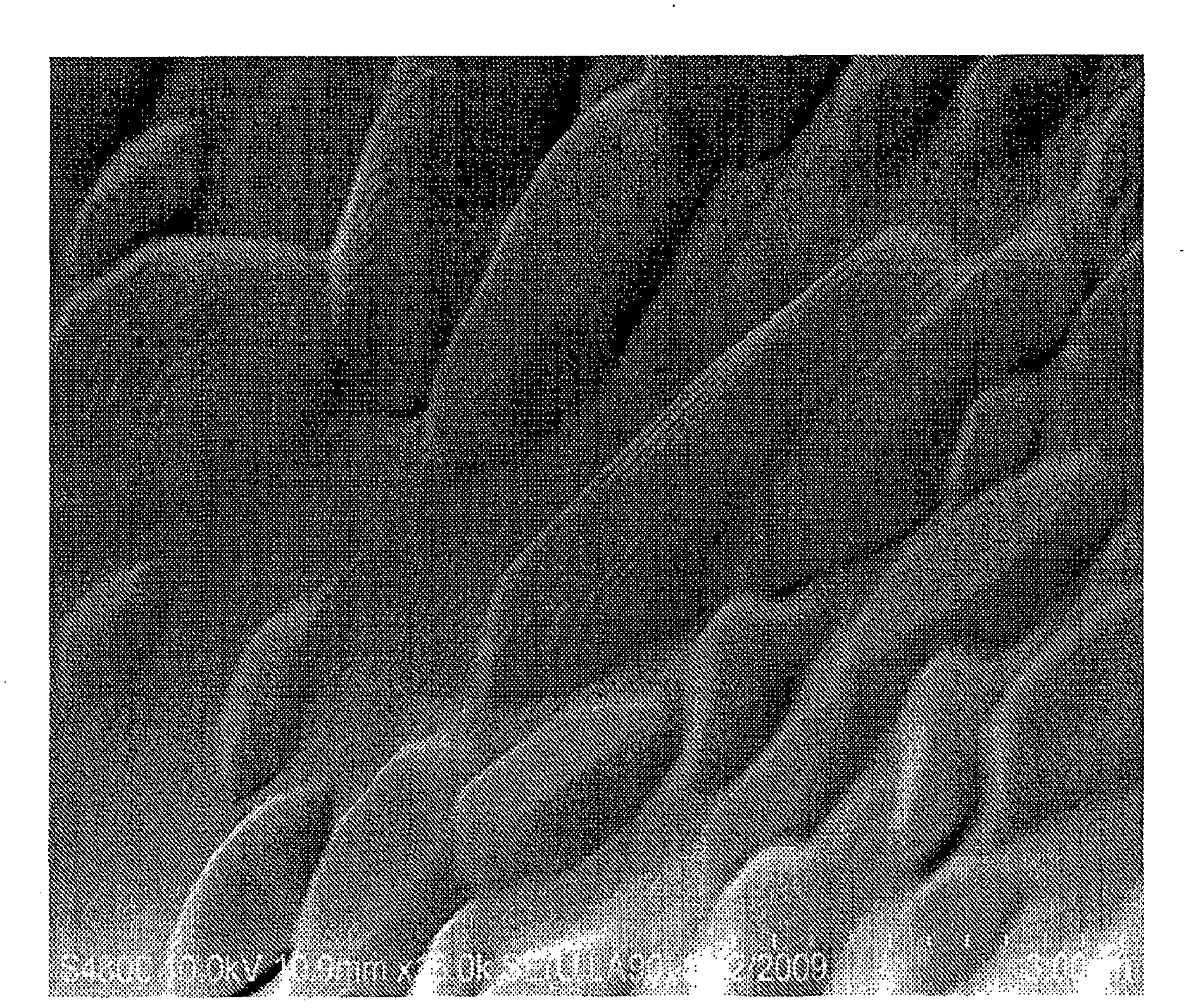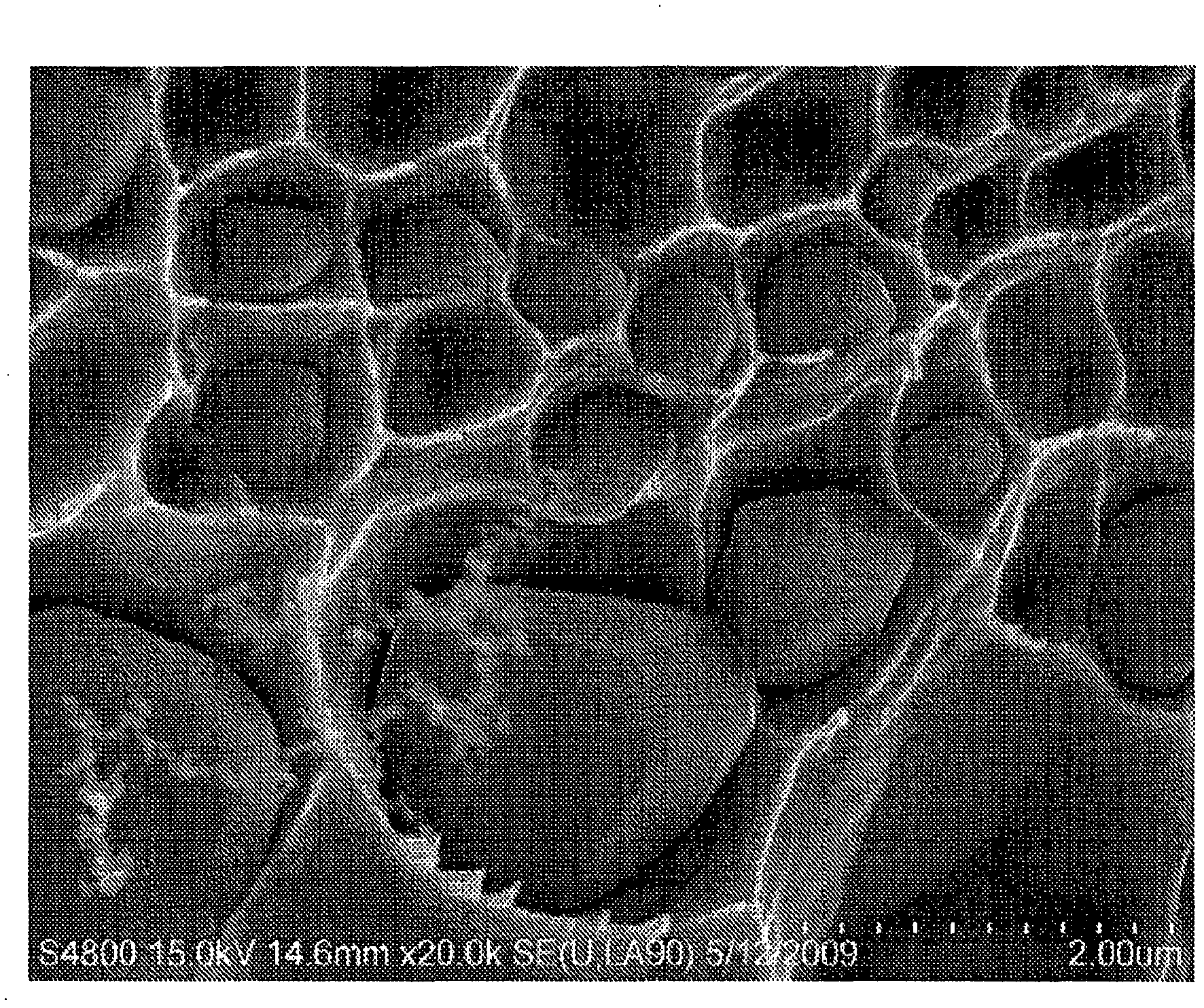Copper-carbon Composition
A composition and copper phase technology, applied in the field of copper-carbon composition, can solve the problems of limiting the use of copper-carbon composites and limiting physical properties
- Summary
- Abstract
- Description
- Claims
- Application Information
AI Technical Summary
Problems solved by technology
Method used
Image
Examples
Embodiment 1
[0027] A graphite crucible (electrically grounded) was placed in a gas heated furnace. The crucible was filled with 100.795 ounces of 99.999% pure oxygen-free, high-purity ("OFHP") copper. OFHP copper was cut from rod obtained from ThyssenKrupp Materials NA of Southfield, Michigan.
[0028] Once the copper in the crucible had melted, the stirring end of the rotary stirrer was inserted into the molten copper and the rotary stirrer was turned on to create a vortex in the molten copper. While mixing, 142 grams of powdered activated carbon was introduced into the molten copper. As the activated carbon was added to the molten copper, a small amount of carbon leaked out. The powdered activated carbon used was available from Calgon Carbon Corporation of Pittsburgh, Pennsylvania -M powdered activated carbon. The temperature of the copper and carbon mixture was measured to be about 2335F.
[0029] A carbon electrode attached to an arc welder is inserted into a mixture of molten c...
Embodiment 2
[0033] A graphite crucible (electrically grounded) was placed in the induction furnace. The induction furnace was obtained from the Pillar Induction Company of Brookfield, Wisconsin. The crucible was filled with 20 pounds of C11000 copper obtained from ThyssenKrupp Materials NA.
[0034] Once the copper in the crucible had melted, the stirring end of the rotary stirrer was inserted into the molten copper and the rotary stirrer was turned on to create a vortex in the molten copper. While mixing, 154 grams of Powdered activated carbon is added to the molten copper. As the activated carbon was added to the molten copper, a small amount of carbon leaked out. The temperature of the copper and carbon mixture was measured to be about 2200F.
[0035] A carbon electrode affixed to a Lincoln arc welder is inserted into a molten copper and carbon mixture. While continuing to mix the carbon into the molten copper, the arc welder was operated to provide 230 amps through the molten co...
Embodiment 3
[0037] Embodiment 3 (comparative example)
[0038] A graphite crucible (electrically grounded) was placed in a gas heated furnace. The crucible was filled with 100.2 ounces of 99.9% pure copper obtained from ThyssenKrupp Materials NA.
[0039] Once the copper in the crucible had melted, the stirring end of the rotary stirrer was inserted into the molten copper and the rotary stirrer was turned on to create a vortex in the molten copper. While mixing, 14 grams of expanded graphite was added to the molten copper. The temperature of the mixture of copper and expanded graphite was measured to be about 2247F.
[0040] A carbon electrode attached to a Lincoln arc welder was inserted into a mixture of molten copper and expanded graphite. While continuing to mix the expanded graphite into the molten copper, the arc welder was operated to provide 240 amps through the mixture of molten copper and expanded graphite. No drop in temperature was observed once the current was provided to...
PUM
 Login to view more
Login to view more Abstract
Description
Claims
Application Information
 Login to view more
Login to view more - R&D Engineer
- R&D Manager
- IP Professional
- Industry Leading Data Capabilities
- Powerful AI technology
- Patent DNA Extraction
Browse by: Latest US Patents, China's latest patents, Technical Efficacy Thesaurus, Application Domain, Technology Topic.
© 2024 PatSnap. All rights reserved.Legal|Privacy policy|Modern Slavery Act Transparency Statement|Sitemap



